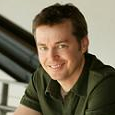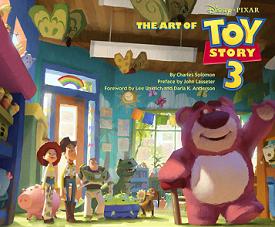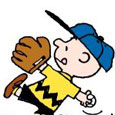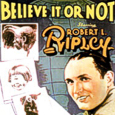The creators of the beloved Toy Story films re-open the toy box and bring moviegoers back to the delightful world of our favorite gang of toy characters in Toy Story 3.
As Andy prepares to depart for college, Buzz, Woody and the rest of his loyal toys are troubled about their uncertain future. Directed by Lee Unkrich, Toy Story 3 is a comical new adventure that lands the toys in a room full of untamed tots who can’t wait to get their sticky little fingers on these “new” toys. It’s pandemonium as they try to stay together, ensuring “no toy gets left behind”.
Animator Victor Navone (Cars, WALL-E, Cars-Toons) joined the team for a one-of-kind adventure after which he’ll never be the same (even physically!)
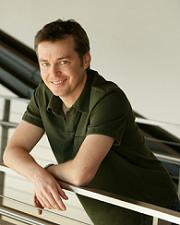
Animated Views: How did you discover the original Toy Story?
Victor Navone: I saw it in the theater in 1995 during its opening week. I remember seeing clips from it at SIGGRAPH the preceding year, and I was very impressed. I was familiar with the Pixar name already, as I had seen many of their short films and the Spike & Mike’s Animation Festivals. I really enjoyed the film, but it didn’t make me consider becoming an animator or joining Pixar. That world still seemed very foreign to me.
AV: How was it getting onboard such a special project like Toy Story 3?
VN: Originally I didn’t want to work on Toy Story 3, because I wanted to experience it as an audience member, just like with the first two films. I was also hesitant to work on characters that were already so established and well-loved. The more I learned about the film, though, the more I realized how good it was going to be, and I eventually came around and asked to work on it. I’m glad I did.

AV: Which scenes did you animate?
VN: As I mentioned before, I had some trepidation about working on the classic toys, so I initially requested that I be assigned shots featuring the human characters. I don’t have a lot of experience animating naturalistic humans, and I thought this would be a good learning opportunity for me.
To portray convincing physics and body mechanics I relied more heavily on video reference than ever before. I animated a few shots of Andy and his mom, and I was the first to tackle shots of Bonnie, the new little girl character. This was a great experience for me, and I was able to draw on my experiences with my own little girls to inform my animated performances. I even filmed reference of my 5-year-old for a couple of scenes.
Once I had a lot of human shots under my belt I decided to try my hand at some of the classic characters, so I was able to request some shots of Buzz, Woody and Jessie. I did a few shots at the beginning of the film with Woody breaking the bad news about “Operation Playtime”, and I also got to do some shots of Spanish Buzz when he first encounters Jessie and is smitten. These latter shots were especially challenging, and we all relied on the work of Carlos Baena, who set the bar early on for Spanish Buzz’s animation.

AV: What was your favorite scene of yours?
VN: I think my favorite scene is the introduction of Bonnie. She only says one word during the entire scene, and the rest is all silent acting. I used the storyboards as a jumping off point, and drew heavily on my own daughters’ personalities to help me generate ideas. I did lots of research; I filmed my daughters, I filmed myself, I watched reference footage of other preschoolers, I looked at photos and I did LOTS of thumbnail drawings. From there it was just about trying to narrow it down to the best ideas that told the story in a unique and genuine way, and satisfied the director’s vision. One of the trickier parts of the scene was animating the two adults, whose faces we don’t see. I had to keep them “alive” enough so you could tell who was talking, but not so much as to distract from Bonnie’s performance.
AV: What was your most complex scene?
VN: Both the above Bonnie shot and my Andy & Mom shot were complex because they were very long and involved naturalistic, full-body human performances. Bonnie had to walk on her knees and interact with a toy prop, and Andy had to lift boxes, walk around, climb up and down a ladder and have a silent conversation with his mom. I’m pretty technically savvy when it comes to animation, so I don’t mind dealing with lots of constraints and complicated setups. The trick is just to keep everything organized and manage my keyframes in economical ways. I chose to work in stepped mode on most of my shots, and would often break them down all the way to 2’s to maintain control of my timing and spacing as much as possible before converting to splines. This was a new method for me, and another learning opportunity on this film.

AV: Did you collaborate with other animators?
VN: It’s actually pretty common for us to share shots. Often one animator will work on the foreground characters and another will handle the background characters. This kind of separation is the easiest since it doesn’t require as much communication and collaboration between the animators, because their characters aren’t interacting. Sometimes two animators will share a dialog scene, with each animator working on a single character. This is trickier, and requires more planning and communication. On Toy Story 3 I shared a few shots, but the characters didn’t have to interact so I was mostly working on my own. For instance, on my shot of Andy and Mom, another animator (Mike Stocker) handled the animation of the dog, Buster, who walks in front of the camera at one point. I had to coordinate with Mike to find out at what frames the dog would be appearing and for how long he would eclipse my characters, but otherwise we didn’t need to relate our performances to each other’s.
AV: In Toy Story 3, you bring back beloved characters from the original films and for whom you have to resume the kind of animation they had then. For some new characters, animators had to find an original and interesting way of animating. How did you manage all that?
VN: For the classic characters we have two entire films of reference, of course, which is very helpful. We also still have animators who worked on the first two films who can help the newer animators. There was a lot of work upfront in pre-production to document the classic characters and create guidelines for the new animators in the form of lectures and model sheets. For the new characters we faced the same challenges and used the same processes that we always do. We discuss the characters with the director, work closely with the rigging TD’s to get the models ready for animation, and we do lots of animation tests – both silent and with dialog – to try to find the character.

AV: Unlike Pete Docter or Andrew Stanton, Lee Unkrich is originally an editor. How did you work with him?
VN: Every director has a different style and different approach to animation, based on their personalities and experiences. Lee is not an animator, so he wouldn’t give intricate animation notes, but he was really clear about his acting notes and what he expected from the performances. As a filmmaker I found Lee to be a lot more precise and technical, since he was acting as both director and editor.
AV: Would you like to share any anecdote about the making of Toy Story 3?
VN: The animation department likes to throw lots of parties and have other events to keep morale and energy high. At one point early in production many of us decided to shave our heads to get a “clean start” on the film – even Lee Unkrich joined in. I had never shaved my head before and I quite liked it. I’m not sure if my wife did…
AV: What do you feel about having been part of Toy Story 3?
VN: I’m glad to have been a part of it because I think it’s a great film and it was a good learning experience for me. As an artist I need to feel constantly challenged, and this film definitely did it for me. It was especially fun to draw reference from my family life, something I couldn’t have done 5 years ago. My skills and sensibilities are constantly evolving, and I’m lucky to be in an environment that always offers me something new and inspirational to work on.
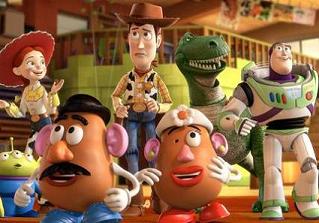
AV: Without revealing secrets, can you tell me a bit about your next project?
VN: Cars 2!


